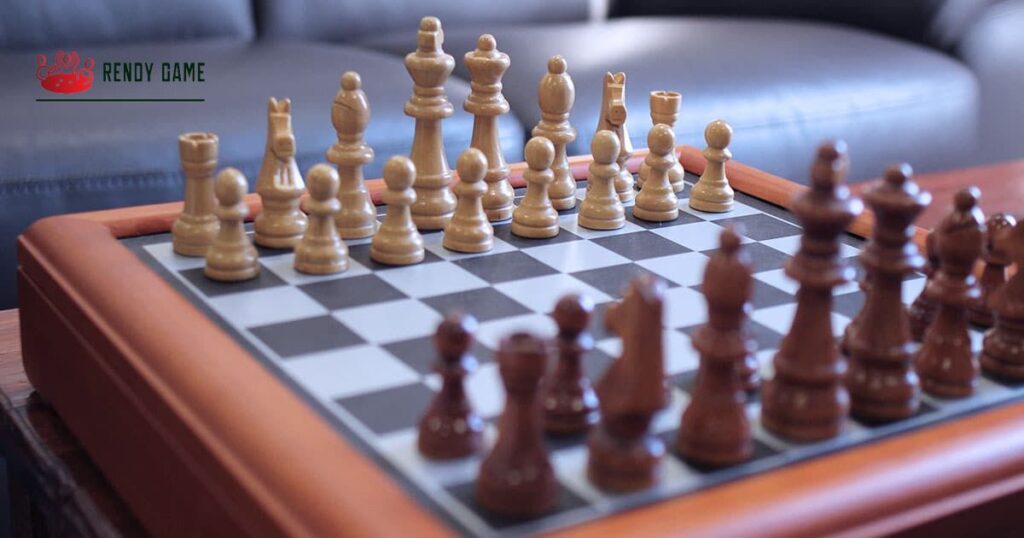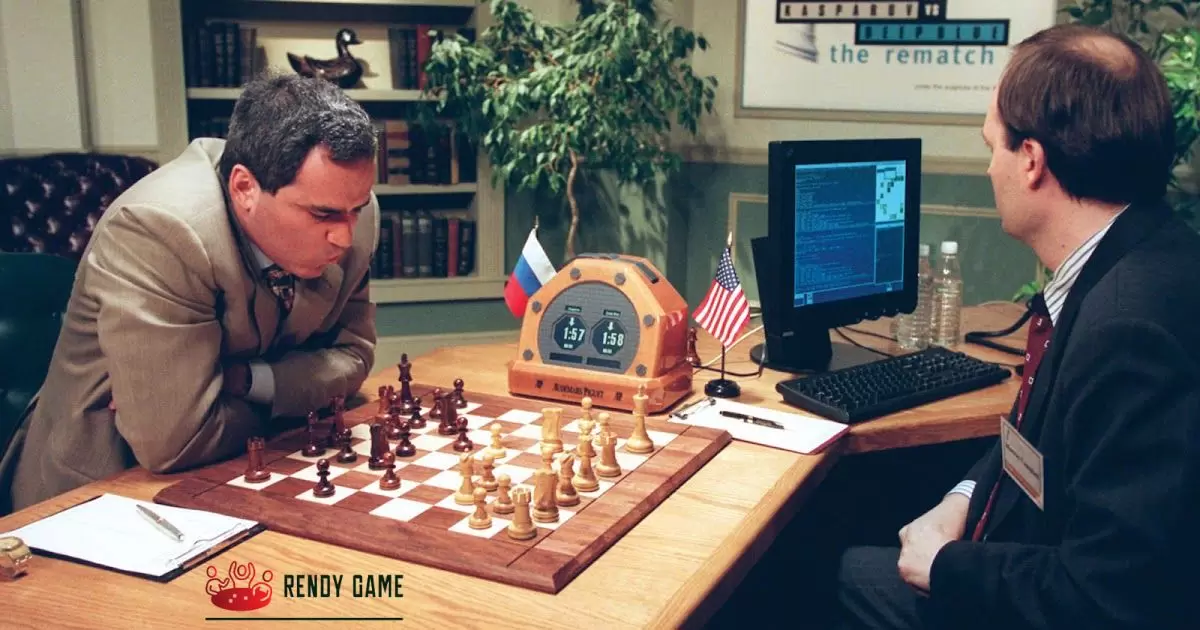Setting up a chess board game is the initial arrangement of chess pieces on the board before a game begins. It is a crucial step to ensure a fair and balanced match between two players. Each player has 16 pieces, including a king, queen, bishops, knights, rooks, and pawns.
How to Set Up A Chess Board Game? If you’re new to the world of chess or need a refresher, this article will guide you through the simple yet precise process of arranging the board. The proper arrangement of pieces sets the stage for the battle of wits and tactics that will follow.
To set up a chess board game, each player places their pieces on the board with precision. The back row consists of rooks, knights, bishops, a queen, and a king, with pawns in front of them. The board must be oriented correctly, with each player having a white square on their right side.
Chess Board Setup
Chess Board Setup is the first crucial step in preparing for a game of chess. The standard chessboard consists of 64 squares arranged in an 8×8 grid. It’s important to ensure the board is oriented correctly, with each player having a white square on their right.
The orientation sets the stage for the game. Understanding the coordinates of the chessboard, such as files (a to h) and ranks (1 to 8), is essential for communicating moves and strategy during the game. Properly setting up the board is fundamental for a fair and balanced match.
Chess Piece Setup
Chess Piece Setup involves placing the 32 chess pieces on the board at the beginning of the game. Each player’s back row should have a specific arrangement, with rooks, knights, bishops, a queen, and a king in particular positions.
The pawns occupy the row in front of the back row. It’s vital to understand the role and movement of each piece as they have distinct characteristics that determine the strategy of the game. Proper chess piece setup is the foundation for a well-executed game.
The Correct Orientation of the Chess Board

Properly setting up a chess board involves careful attention to various details, including the correct orientation of the board. The board should be positioned so that each player has a white square on their right-hand side. This ensures that both players start with a symmetrical and balanced setup, making the game fair and competitive from the outset.
Placing the Queen correctly
Placing the queen correctly is a critical aspect of the chess setup. The queen is positioned on the remaining central square of her color white queen on a white square, and the black queen on a black square. This placement maximizes her influence on the board and allows for optimal maneuverability during the game.
Proper King Position
Equally important is the proper positioning of the king. The king should be placed beside the queen, creating a central but well-protected position. This is essential for the king’s safety as the game progresses, as it is a vulnerable piece that must be shielded from threats by other pieces.
The Missing Pieces (Bishops, Knights, Rooks & Pawns)
The arrangement of the remaining pieces, bishops, knights, rooks, and pawns is equally vital. Bishops are positioned next to the knights, creating a symmetrical and balanced setup. The knights are placed adjacent to the bishops, and the rooks occupy the corners of the board.
The pawns are positioned in the front row, forming the first line of defense for the remaining pieces. Each piece’s correct placement is crucial to creating a strategic and balanced starting position that sets the stage for a challenging and enjoyable chess game.
Special Rules of Chess Board Game
The significance of a proper setup in a chess board game cannot be overstated. Ensuring that the pieces are correctly placed on the board is not just a formality but a fundamental aspect of the game. It ensures fair gameplay, where both players have an equal and balanced starting position.
Without a proper setup, one player may gain an unfair advantage, leading to an imbalanced match. The initial arrangement of the pieces sets the strategic foundations for the game. It dictates the early moves, piece coordination, and potential openings.
| Special Rule | Description |
| Castling | Allows the king and rook to move simultaneously under certain conditions. |
| En Passant | A unique pawn capture rule, which permits a pawn to capture an opponent’s pawn as if it had moved one square forward. |
| Pawn Promotion | When a pawn reaches the opponent’s back rank, it can be promoted to a more powerful piece (usually a queen, but other options are possible). |
Significance of Proper Setup of Chess Board Game
The significance of a proper setup in a chess board game cannot be overstated. Ensuring that the pieces are correctly placed on the board is not just a formality but a fundamental aspect of the game. It ensures fair gameplay, where both players have an equal and balanced starting position. Without a proper setup, one player may gain an unfair advantage, leading to an imbalanced match.
Common Mistakes to Avoid
To excel in chess, it’s essential to be aware of common mistakes that beginners often make during setup and gameplay. These errors can include placing pieces in the wrong squares, not protecting the king, and neglecting pawn development.
Learning to avoid these mistakes is crucial for becoming a skilled chess player. Strategies for avoiding setup errors and common gameplay blunders are critical for improving your chess skills and achieving success on the board.
Tips for Beginners
For beginners, mastering the art of setting up a chess board and playing the game effectively can be a challenging but rewarding journey. This section provides simplified, step-by-step instructions for setting up the chessboard, as well as practical tips for practicing and honing your chess skills.
Learning the fundamentals and gradually building your expertise is the key to becoming a proficient chess player. If you’re looking for a change of pace, you can also explore different board games like Wingspan, which offers a unique gaming experience.
Online Resources for Chess Learning
Chess enthusiasts looking to improve their skills and knowledge have a wealth of resources at their disposal. Online platforms offer a treasure trove of information, from tutorials and strategy guides to chess puzzles and interactive lessons.
Websites like Chess.com and lichess.org provide free access to numerous learning tools, allowing players to study openings, practice endgame scenarios, and even play against computer opponents of varying difficulty levels.
FAQs
How should I orient the chessboard correctly?
To ensure the correct orientation, make sure there’s a white square on your right side.
What is the arrangement of pieces on the back row?
The back row should have, from left to right, rooks, knights, bishops, queen, and king.
Are there any unique rules for pawn moves?
Yes, pawns have special rules, like en passant captures and pawn promotion.
What’s the purpose of castling in chess?
Castling allows the king and rook to move simultaneously for safety and positioning.
How do I avoid common setup mistakes in chess?
Pay attention to piece placement, king safety, and overall board strategy to avoid common errors.
Conclusion
The proper setup of a chess board and an understanding of the game’s fundamental rules and strategies are essential for enjoying and excelling in the game of chess. The orientation of the board, the arrangement of the pieces, and knowledge of special rules are foundational elements.
Recognizing and avoiding common mistakes is pivotal for advancing your skills, especially for beginners. With the right guidance and practice, you can embark on an exciting journey to become a skilled chess player, ready to engage in challenging matches and strategic battles on the chessboard.

